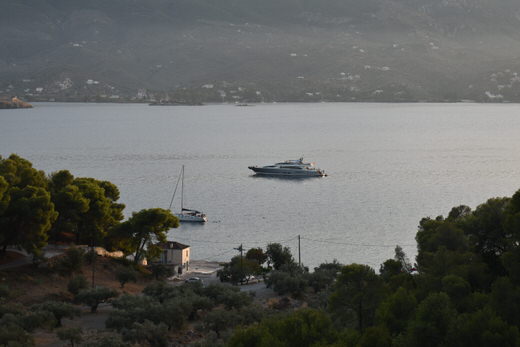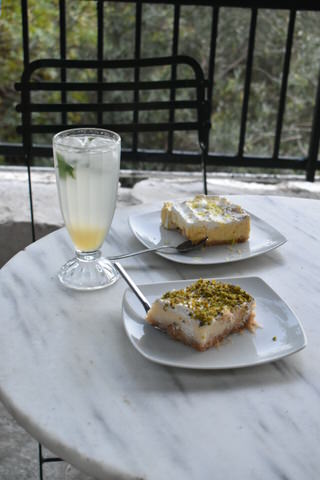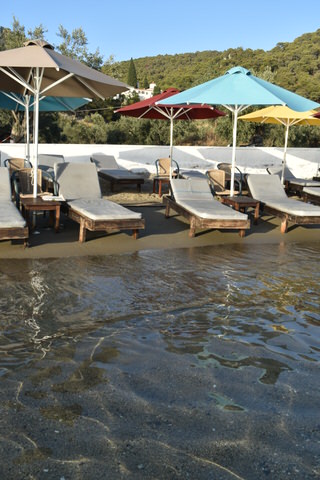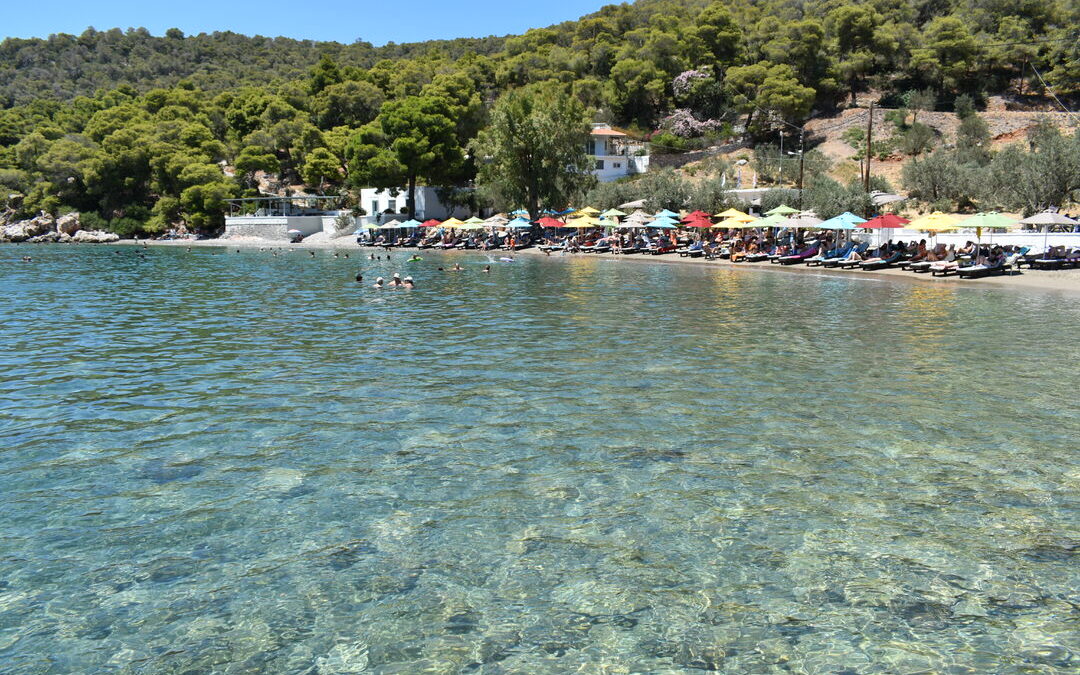An all time favourite destination among lovers of Greek islands, Poros retains its charm at all seasons and thanks to its easy accessibility it’s always ideal for even a short getaway. And the fact that although it’s small island, it’s full of sights and experiences to enjoy, makes it even more attractive. After a long stroll in the picturesque capital town, heading from the port and the elegant mermaid statue towards Pounta neighborhood with the colourful fish boats and the pretty fish taverns, after climbing up the steep steps that lead on top of the small hill with the characteristic Clock Tower in order to enjoy the amazing panoramic view, it’s time to invest part of your time in getting to know the rest of the equally interesting aspects of Poros and enjoy the clear waters of one of the island’s many shores, Monastiri beach which lays in the shadow of a famous monastery.


In the southeastern part of Poros, right after the popular Askeli beach where you will find a big variety of restaurants and hotels, the road splits in two directions, one descending and leading to a small, serene beach, which takes its name from Zoodohos Pigi ( The Source of Life ) Monastery, accessible by following the road’s upward direction. My advice is to take this ascending direction first, leading through a leafy creek to one of the most important historic and religious monuments of Poros, in use since 1720. Built in a short distance of just 4km from the port and overlooking the soft, pine covered hill slope and the lovely bay just under it, this monastery is an excellent example of religious architecture as well as a peaceful retreat hidden in the rich nature that surrounds it.
Poros’ residences’ donations and a special funding coming from Athens’ Archbishop Jacob II provided the financial means to support the monastery’s construction, which took the place of an older one built on the same site probably in the εξασφάλισαν 14th century. A century later, the warriors of the Greek Revolution of 1821 used the monastery as the location of their secret meeting, organising the sea battles against the Ottomans. As a testimony to that era, in the church’s yard the visitor can see two tombs belonging to great naval heroes of the Greek Revolution of 1821, Manolis Tombazis from Hydra island and Nikolis Apostolis from Psara. A few years later, Ioannis Capodistrias, the first governor of the new, free Greek state, established the first Religious School of Greece on the premises. A great ceremony marked the school’s opening on the 30th of October 1830, which started operating with 15 students and a teaching programme that included studying Greek language, Religious doctrine, History and Carpentry.



Today, when visiting the monastery, one can admire numerous works of religious art decorating the interior of the church that stands as the centre of the monastery complex. Make sure you don’t miss the solar clock dating since 1820 in the exterior south wall before entering the beautiful basilica, in which you will be captivated by the impressive wood carved altarpiece and the contrast it makes to the black and white floor with the geometric patterns. According to one source, the richly engraved altarpiece was created in a Cappadocian workshop in the 17th century, but there’s also a strong possibility that it comes from the famous Zoodohos Pigi Baloukli Monastery in Constantinople.


Either way, it’s an exquisite artwork, framed by equally remarkable religious depictions and paintings, like that of Zoodohos Pigi, created in 1650 in Venice by the famous Cretan painter Theodoros Poulakis, the one of Immaculate Venice, also by an important Cretan iconagrapher, Emmanuel Tzanes, or the one donated to the monastery as a sacred religious memento by Andreas Miaoulis, admiral of the Greek fleet in the revolution of 1821. A really touching story is connected to another valuable icon of Virgin Mary, a work of the Italian painter Raffaello Ceccoli in 1853. It is believed that Christ’s mother has the face of his ill daughter, who had visited the monastery with him, and was buried in the church yard when she died. Her tomb can still be seen there today.



Before leaving the tall walls of the monastery complex behind you, make sure you take a moment to enjoy the gorgeous view that spreads from the leafy slope down to the calm blue waters of Monastiri beach, often dotted by impressive yachts that anchor in the wind protected, picturesque bay. When you finally leave the monastery, make sure you don’t miss the traditional coffee house – Kafenio Melistakto, next to the historic water spring, after which the monastery in named, as the water that purrs through a marble lion head is believed to have healing properties. Next to it stands a whitewashed, small chapel, dedicated to two saints, which you can also visit.


Kafenio Melistakto is the ideal place to enjoy a tasty breakfast if you plan your visit to the monastery in the morning. Homemade lemonade and sour cherry drinks will refresh you and much perfectly the excellent homemade cheese pie. Don’t hesitate to give in to the delicious, fresh and also homemade desserts, like the light lemon pie, the fluffy ekmek and the walnut pie, the traditional galaktoboureko that smells amazing as it’s made with fresh butter, or if you prefer something lighter, try the traditional Greek sweets of the spoon, like the sour cherry, that match perfectly a cup of coffee under the shade of the old plane trees. They are all prepared on spot, by Mrs Nektaria, the energetic and polite owner, and served by her husband Mr Meletis who will also give you useful information about Poros.




In the southeastern side of Poros’ coastline, you will combine swimming in a wind protected beach with a visit to one of the most important sights of the island

It’s now time for a refreshing dive and relaxation in the small, lovely beach you were gazing at a little while ago. Most of it is well organised with colourful sun umbrellas and comfortable sun beds, which can be pre-booked and there’s also a canteen style beach bar that serves juices, cocktails and snacks. And with free shower facilities available for all, the only thing you should focus on is swimming in the clear waters and enjoying the wonderful view that extends to the shores of Peloponnese, the Lemon forest of Galatas and the small island called Bourtzi. Take a careful look at it and you will notice a fortress built in 1827 that is now a historic, protected monument, one more sight in the list of many, interesting ones await for you in idyllic Poros.




